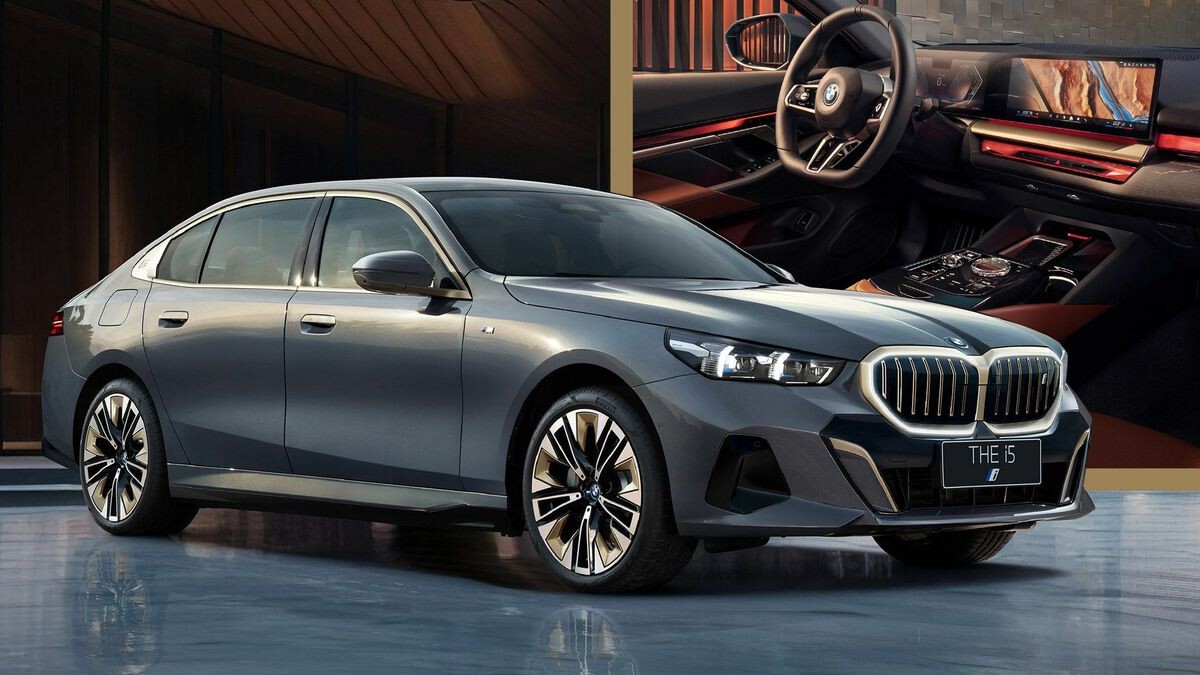In a world where car prices continue to soar and new vehicle inventory remains inconsistent, many consumers are looking toward the used car market as a more accessible alternative.
Among them, a growing number of people are seriously considering high-mileage vehicles—cars with over 100,000 miles on the odometer—as practical and economical choices.
But that decision comes with its own risks and rewards. While some high-mileage cars are reliable workhorses that can easily double their mileage with proper care, others are financial traps waiting to spring. Distinguishing between the two isn’t just smart—it’s essential for protecting your wallet and peace of mind.
Mileage alone doesn’t determine a car’s value or longevity. What truly matters is how well the car was designed, engineered, and maintained over its life. Some vehicles are simply built better than others. They use higher-quality materials, have more robust engines, and are designed with longevity in mind.
Others, however, are plagued by weak components, fragile electronics, or engineering shortcuts that may only last through the warranty period. So when shopping the used market, it’s not enough to know that a car has high miles—you also need to know how well it ages.
Why do people even consider buying high-mileage vehicles in the first place? The answer is simple: affordability and potential value. A car that originally cost $35,000 might be available for $7,000–$10,000 once it crosses the 150,000-mile threshold. For many buyers—students, working families, commuters—this is the only financially viable route.
If the car is one of the “good” ones, it can serve them well for years, offering thousands of miles of reliable transportation at a fraction of the cost of new ownership. But if the car is one of the “bad” ones, what seems like a bargain quickly turns into a bottomless money pit.
Another important factor is the shift in how we think about vehicle lifespan. Thanks to advancements in automotive engineering, many modern cars can easily last 200,000–300,000 miles with proper maintenance.
Engines are more efficient and durable, transmissions are better calibrated, and corrosion-resistant materials are standard. However, that doesn’t apply equally across the board.
A well-kept Toyota Camry might age gracefully into its 200,000s, while a high-mileage luxury German sedan could rack up repair bills that eclipse its resale value. This discrepancy in design philosophy is one of the key reasons why knowing which high-mileage cars are worth buying—and which ones aren’t—can save you thousands in repair and replacement costs.
It’s also critical to consider how certain brands approach reliability. Automakers like Toyota, Honda, and Subaru have built reputations around making long-lasting, low-maintenance vehicles. They use simpler technologies, focus on build quality, and prioritize function over form.
Others, however—especially in the luxury space—pack their vehicles with cutting-edge features that don’t always stand the test of time. Turbochargers, advanced infotainment systems, adaptive suspensions, and overly complex transmissions may enhance performance in the short term but can become liabilities once the warranty expires and the mileage climbs.
In this guide, we’ll explore five high-mileage vehicles that are still worth buying—cars that offer dependable, durable service well into their second or third lifecycle. These are the models that mechanics trust, owners love, and real-world data supports as strong long-term performers.
We’ll also look at five high-mileage cars you should avoid—vehicles that often suffer from chronic reliability problems, high maintenance costs, or poor aging characteristics. While they may look appealing on the surface, these cars can leave you regretting your purchase within months.
Whether you’re shopping for your first car, replacing an aging commuter, or simply trying to make a smart investment in a volatile market, knowing which vehicles hold up—and which fall apart—makes all the difference. We won’t be relying on marketing fluff or overly optimistic assumptions.
This guide is based on real-world owner experiences, patterns reported by mechanics, and long-term reliability data. It’s about cutting through the noise to get to what matters: dependable transportation you can count on, even when the miles are high.
So before you commit to that high-mileage vehicle you saw online, read on. In the pages ahead, you’ll find insight into which aging cars are still going strong—and which ones should be left on the lot.
ALSO READ: 5 Pickups With the Best Factory Running Boards and 5 Needing Aftermarket
5 High-Mileage Cars Still Worth Buying
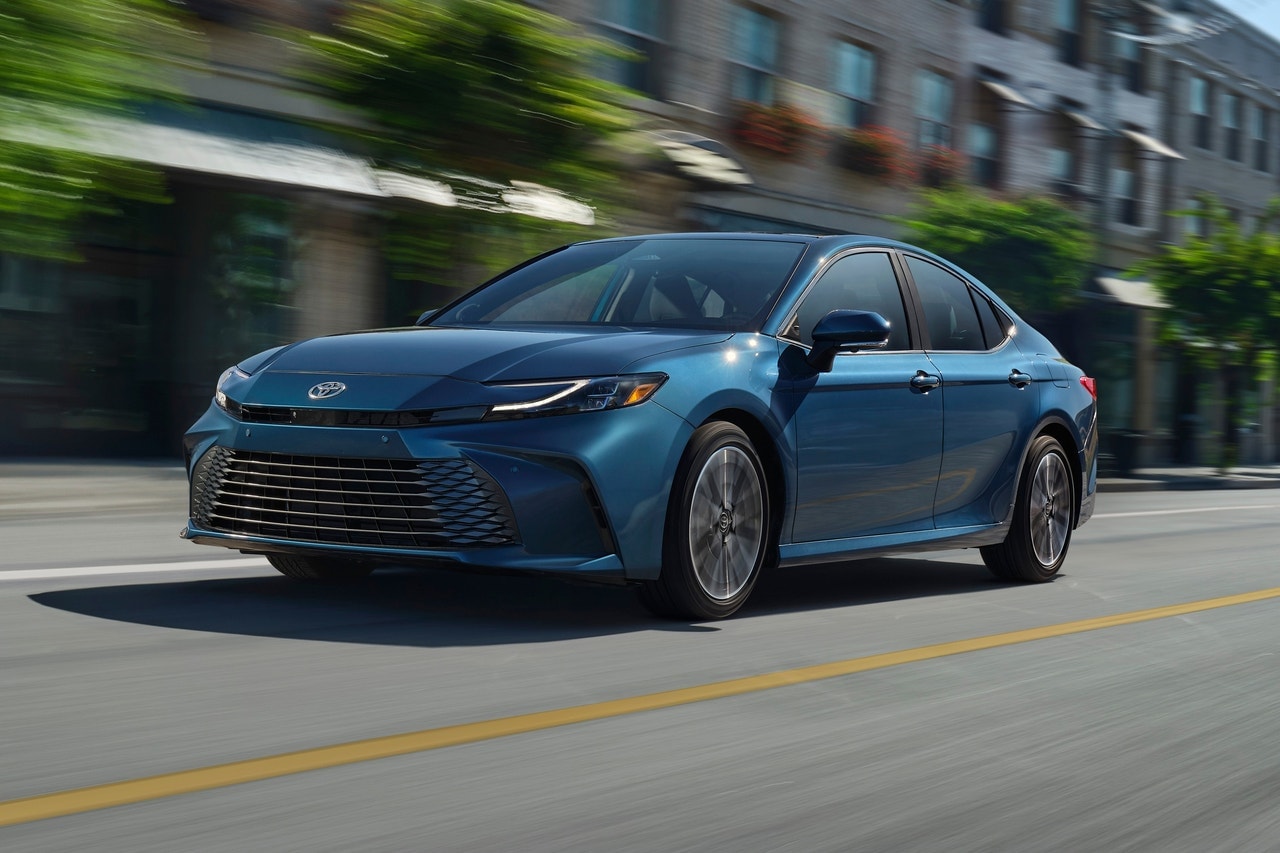
1. Toyota Camry
The Toyota Camry has earned its reputation over decades as one of the most dependable sedans on the market. From the late 1990s models to the modern versions post-2010, the Camry has consistently delivered solid performance, low maintenance needs, and incredible durability.
What makes it exceptional in the high-mileage market is not just the fact that it can reach 200,000+ miles—it’s that it can do so with minimal mechanical drama.
Engines like the 2.4L inline-four and the 3.5L V6 in later trims are known for their longevity. These powertrains, especially when paired with Toyota’s well-calibrated automatic transmissions, offer a smooth and composed ride that rarely deteriorates even after a decade of road use.
The beauty of owning a high-mileage Camry lies in its unpretentious design philosophy. There are no unnecessarily complex systems designed to break down; everything in the Camry is intentionally simple and practical. The electronic systems are minimalistic but effective.
Even in older models, the basic tech—like climate control, radio, and electric windows—still operates without fail, assuming the vehicle has been moderately cared for.
Mechanics often praise the Camry because everything under the hood is accessible and easy to work on, making it a low-cost vehicle for routine servicing. The timing chain (as opposed to a belt in many competitors) means one less critical service to worry about. It’s designed to just keep going.
Even after reaching high mileage, the Camry maintains a level of refinement that’s rare in its class. The suspension system remains relatively comfortable over time, absorbing bumps and potholes with ease. Sound insulation, particularly in post-2007 models, holds up well.
The car doesn’t suddenly become noisy and loose after it crosses 150,000 miles. Add to that the fact that parts are readily available and reasonably priced, and you get a vehicle that is easy to live with, even when it’s far from new. It’s not flashy, but it has the feel of a durable, well-built machine that never tries to be more than it is—just dependable, everyday transportation.
For buyers looking at high-mileage vehicles, the Camry provides an uncommon sense of security. While other used cars in the 150K+ range may come with warnings and caveats, a well-documented Camry with consistent service records can still be a fantastic deal.
These cars are common for a reason—because they work. Taxi fleets, delivery services, and families all rely on them for the same reason: they just don’t break. If you’re okay with giving up some bells and whistles for the sake of long-term usability, the Camry continues to be a rock-solid investment in any phase of its life cycle.
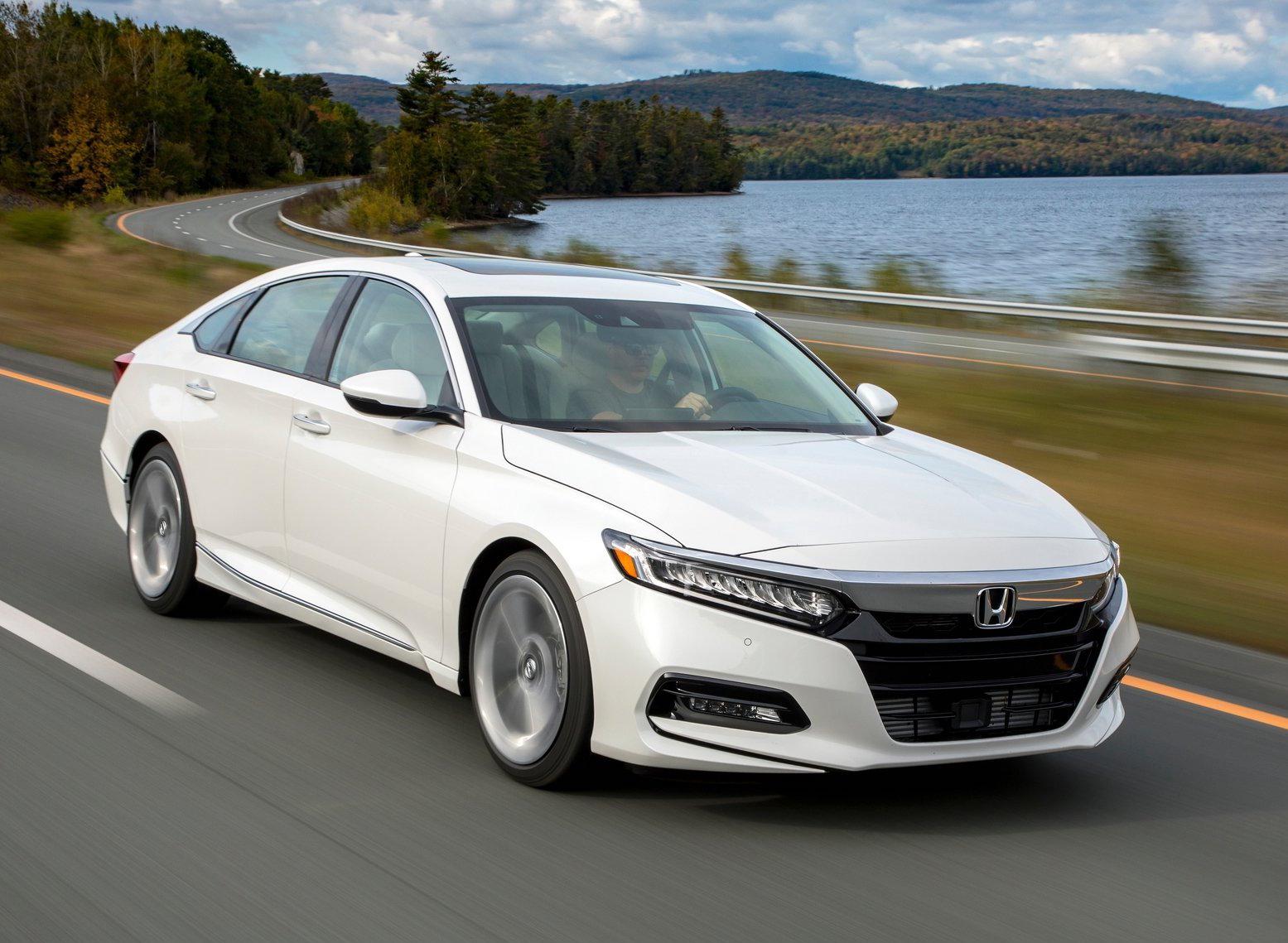
2. Honda Accord
Few vehicles embody the phrase “engineered to last” like the Honda Accord. For over four decades, the Accord has stood as a benchmark in the midsize sedan segment for quality, comfort, and long-term value.
High-mileage Accords—particularly those with the 2.4L four-cylinder engine or the optional 3.5L V6—are revered among car enthusiasts and mechanics alike for their resilience and simplicity.
Whether you’re looking at an early 2000s model or something more recent like the 2014–2017 generation, these cars are built to outlast nearly everything in their class. Many Accords live well beyond the 250,000-mile mark, often with nothing more than routine maintenance.
The Accord’s blend of performance and practicality is another key factor in its long-term appeal. While some sedans are content to just be “appliances,” the Accord offers a more engaging drive. Even with high mileage, the steering remains sharp, the chassis is responsive, and the ride comfort stays relatively intact. The cabin—while not overly luxurious—is smartly laid out and ergonomic.
Materials used in the dashboard, seats, and trim tend to hold up remarkably well over time. Even when the odometer rolls past 200K, you’ll likely find the interior free of major wear, rattles, or peeling components. It’s a sign of the attention to detail Honda applies in its manufacturing processes.
Mechanically, the Accord is a dream for both DIYers and professionals. Many versions use timing chains, reducing long-term service costs, and the engine bay is designed with accessibility in mind. Parts are affordable and widely available thanks to the Accord’s popularity, and online communities provide a wealth of troubleshooting guides and tips for owners.
Common high-mileage service items—like control arms, struts, and alternators—are easy to source and generally inexpensive to replace. When properly maintained, even higher-mileage Accords don’t suffer from catastrophic failures that plague many other vehicles in the same mileage bracket.
Perhaps most importantly, the Accord maintains a high resale value. Even after exceeding 150,000 miles, buyers still seek them out due to their sterling reputation. Insurance costs remain reasonable, and because the car isn’t overly flashy, it doesn’t attract much theft or vandalism.
From young drivers to retirees, the Accord appeals to nearly everyone. If you’re in the market for a reliable, long-lasting vehicle that still feels like a proper car, the Honda Accord—regardless of mileage—is an exceptional choice.
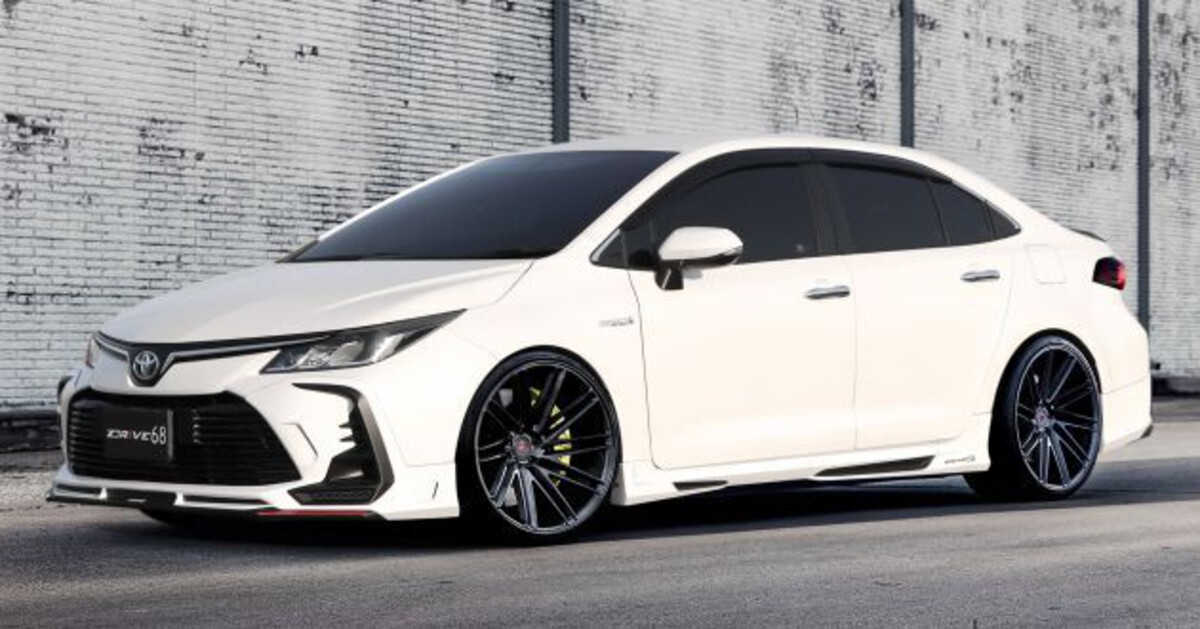
3. Toyota Corolla
The Toyota Corolla might not be the most thrilling car on the road, but when it comes to high-mileage ownership, few vehicles are as reassuring. Known for its durability, fuel efficiency, and minimal maintenance needs, the Corolla is a staple of the economy car segment. Its engines—especially the 1.8L inline-four used for many generations—are famously durable and fuel-efficient.
Whether you’re driving a model from the early 2000s or something more recent, you’ll find that the Corolla can easily reach 200,000–250,000 miles with basic upkeep. It’s one of those rare cars where you can almost predict its future performance just by knowing it was built properly and maintained routinely.
What’s remarkable about the Corolla is that it embraces its identity as a simple, no-nonsense commuter car. It doesn’t pretend to be sporty or luxurious, and because of that, it rarely incorporates complex or fragile systems that might fail over time. The transmission—whether automatic or manual—is geared for reliability rather than aggressive performance.
The suspension setup is soft and conservative, which means components aren’t overly stressed. Electronics are minimal, which means fewer things can go wrong. In many high-mileage Corollas, even basic functions like air conditioning and window motors continue to operate flawlessly well into the car’s second decade of life.
Another major advantage of the Corolla in the used market is cost. High-mileage Corollas are often among the most affordable cars available, yet they rarely come with the hidden costs that plague other budget options. Repair costs are low, fuel economy is consistently excellent (often hovering in the 30–35 MPG range), and insurance premiums are minimal.
This makes the Corolla a perfect car for commuters, college students, or anyone who simply needs a reliable machine that won’t let them down. Even if you have to replace parts like the water pump or alternator, you’ll find that most repairs can be done quickly and cheaply.
Despite being categorized as an “economy car,” the Corolla often punches above its weight when it comes to dependability. It doesn’t just survive at high mileage—it thrives, thanks to Toyota’s focus on quality and longevity.
You won’t be wowed by its tech features or acceleration, but you will appreciate the peace of mind that comes with driving a car that simply works, day in and day out. For anyone looking for an affordable high-mileage car that doesn’t compromise on dependability, the Corolla stands tall as one of the best options available.
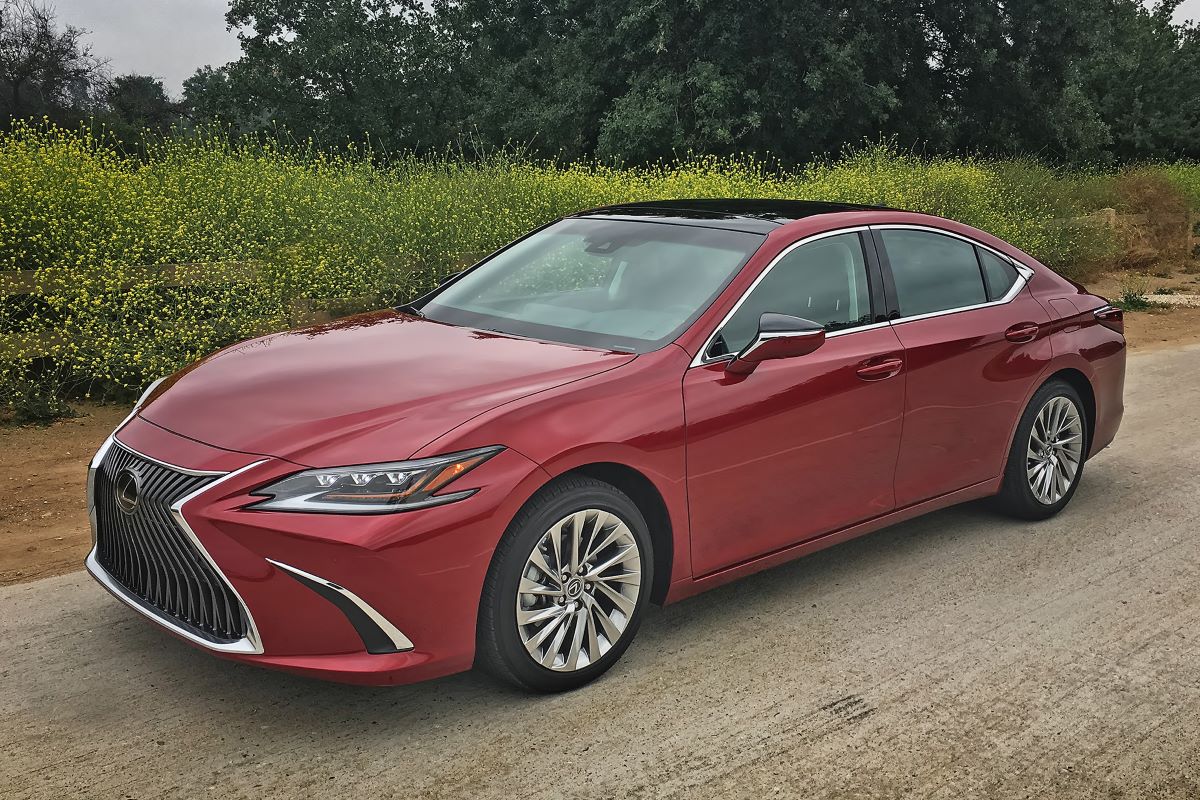
4. Lexus ES 350
If you’ve ever dreamed of owning a luxury car without the luxury price tag—or the nightmare maintenance bills—then the Lexus ES 350 may be the perfect high-mileage option. Built on the same platform as the Toyota Camry, the ES 350 inherits much of Toyota’s renowned engineering and reliability while elevating the experience with upscale features and materials.
The 3.5L V6 engine used in the ES 350 is widely respected for its smooth operation and long-term durability. These engines are known to pass 250,000 miles with ease, particularly in models from 2007 onwards, where refinement and build quality were noticeably improved.
Unlike many other luxury sedans, the ES 350 doesn’t overload itself with gimmicky tech or fragile electronics. The infotainment system may not be cutting-edge in older models, but it works—and continues to work well past the 100K mark. Interior materials are where this Lexus shines: leather seats that stay supple, real wood trim that doesn’t warp, and soft-touch plastics that resist fading or cracking.
Even in high-mileage examples, the cabin often looks and feels like it’s from a car with far fewer miles. That’s a rare achievement, especially in a segment where interiors often fall apart once the odometer climbs.
Driving a high-mileage ES 350 is also surprisingly enjoyable. The suspension is soft and tuned for comfort, gliding over rough roads with ease. Engine noise is subdued, the ride is balanced, and the car feels far newer than its mileage suggests.
Owners frequently praise the vehicle for its quiet cabin and minimal road noise, even after 10 or more years of use. It doesn’t have the athleticism of a BMW or Audi, but it more than makes up for it with bulletproof reliability and a luxurious, serene driving experience.
Maintenance costs are slightly higher than those of a Toyota, but still far below those of German luxury brands. And because the ES shares many parts with the Camry, repairs are rarely complex or expensive.
In fact, many mechanics welcome a high-mileage Lexus into their shop far more than they would a similarly aged European luxury car. If you want comfort, quality, and dependability wrapped into one used car—without paying a premium—the Lexus ES 350 is one of the smartest high-mileage investments you can make.
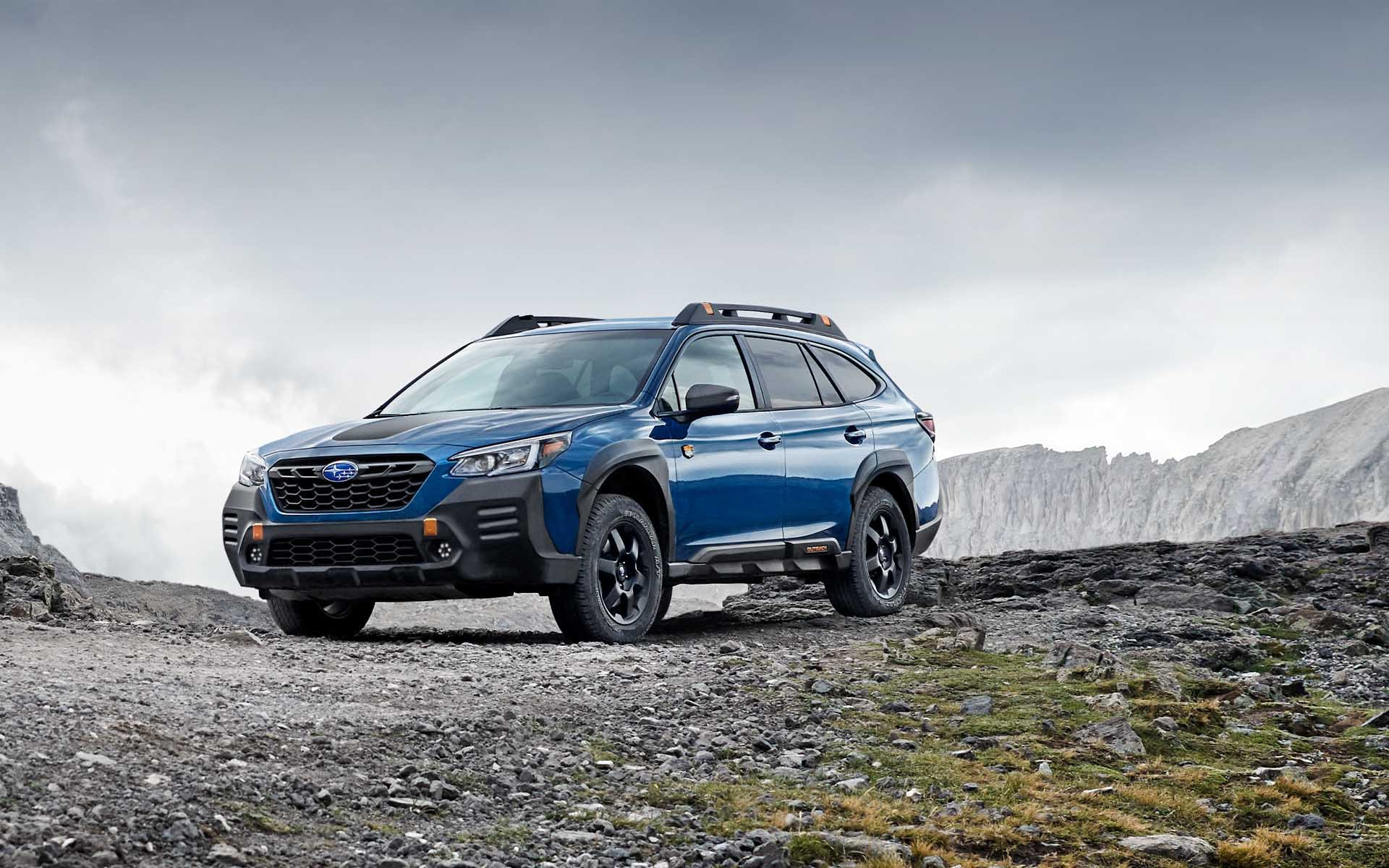
5. Subaru Outback
The Subaru Outback is a beloved option among drivers who need both dependability and versatility. Known for its standard all-wheel-drive system, wagon-like utility, and impressive safety ratings, the Outback is a favorite for outdoor enthusiasts, families, and commuters alike.
While some might be hesitant to purchase a high-mileage Outback due to stories of head gasket issues in earlier models, the truth is that later versions—especially from 2010 onward—have proven themselves to be solid, long-lasting vehicles.
The Outback’s horizontally opposed “boxer” engines, when properly maintained, can easily carry the car well beyond the 200,000-mile mark.
One of the standout aspects of the Subaru Outback is its practical design. Unlike SUVs that prioritize style over substance, the Outback offers a thoughtfully designed interior, excellent cargo space, and a low center of gravity that provides sedan-like handling.
This is particularly valuable in high-mileage scenarios, where consistent ride comfort and predictable handling become even more important. Even older models have interiors that age well, with high-quality materials and intuitive controls.
The vehicle is well-insulated, offers a smooth ride over long distances, and handles adverse weather conditions better than most cars on the road, thanks to Subaru’s symmetrical all-wheel drive.
Of course, no vehicle is perfect, and the Outback does have some caveats. Older models with the 2.5L engine should be inspected for past head gasket replacements or signs of oil leakage. However, many of these issues were addressed with updated gasket materials and improved designs in later years.
CVT transmissions, common in newer models, also require attention and regular fluid changes—but with appropriate care, they last longer than the internet horror stories would suggest. The benefit here is that most major issues are well-documented and widely known within the Subaru community, making it easier to buy smart and avoid poor-condition examples.
The Outback also enjoys strong resale value, and that’s a reflection of how well it holds up. People are willing to pay for high-mileage Outbacks because they’ve seen what the vehicle can endure. It’s one of the few cars on the used market where a 180,000-mile example can still fetch good money—if it’s been well cared for.
Whether you’re looking for a road trip machine, a weekend camping companion, or just a winter-weather daily driver, the Subaru Outback stands out as one of the best high-mileage cars still worth buying.
5 High-Mileage Cars You Should Avoid

1. BMW 5 Series (E60 Generation, 2004–2010)
The BMW 5 Series, specifically the E60 generation produced between 2004 and 2010, often entices used car shoppers with its sleek design, high-end interior, and luxury badge at a bargain price. However, these sedans become notoriously problematic once they exceed the 100,000-mile mark.
While new, the E60 offers a brilliant blend of comfort, handling, and power, but those same features are supported by a labyrinth of overly complex electronics and finicky mechanical systems. At high mileage, these cars often transform from sophisticated executive machines into financial sinkholes that require constant care and deep pockets to maintain.
One of the most notorious issues with the E60 lies in its electronics. The iDrive infotainment system, which was groundbreaking when first introduced, has aged poorly. It often malfunctions or becomes completely inoperable, requiring expensive dealer diagnostics to resolve.
Electrical problems are not limited to the infotainment; common faults include window regulators, seat position sensors, door lock actuators, and even climate control units. These issues may seem minor individually, but when multiple systems begin failing—often simultaneously—they create a cascade of frustrating and costly repairs that suck the joy out of ownership.
Under the hood, the story doesn’t improve much. The inline-six engines, particularly the N52 and N54 turbocharged versions, are praised for performance but are infamous for reliability problems. Oil leaks from valve cover gaskets and oil pan gaskets are common.
The N54 turbo engine is known for high-pressure fuel pump failures, carbon buildup, and wastegate rattle, all of which are expensive to fix. Cooling systems are another Achilles’ heel—water pumps and thermostats often fail around the 100K mark, and given the engine’s tight packaging, repairs aren’t cheap. Even simple jobs can turn into multi-hour, high-cost ventures due to the complexity of the design.
Perhaps the most disheartening aspect is that these issues are not just anecdotal—they are systemic across the platform. Enthusiast forums are filled with threads of disappointed owners who bought a high-mileage E60 thinking they were getting a bargain, only to find themselves pouring thousands of dollars into a car worth only a fraction of its original MSRP.
Unless you’re a seasoned DIY mechanic with a dedicated garage and deep familiarity with BMW platforms, a high-mileage E60 is best avoided. The potential for financial strain and constant inconvenience far outweighs any prestige the badge might still carry.
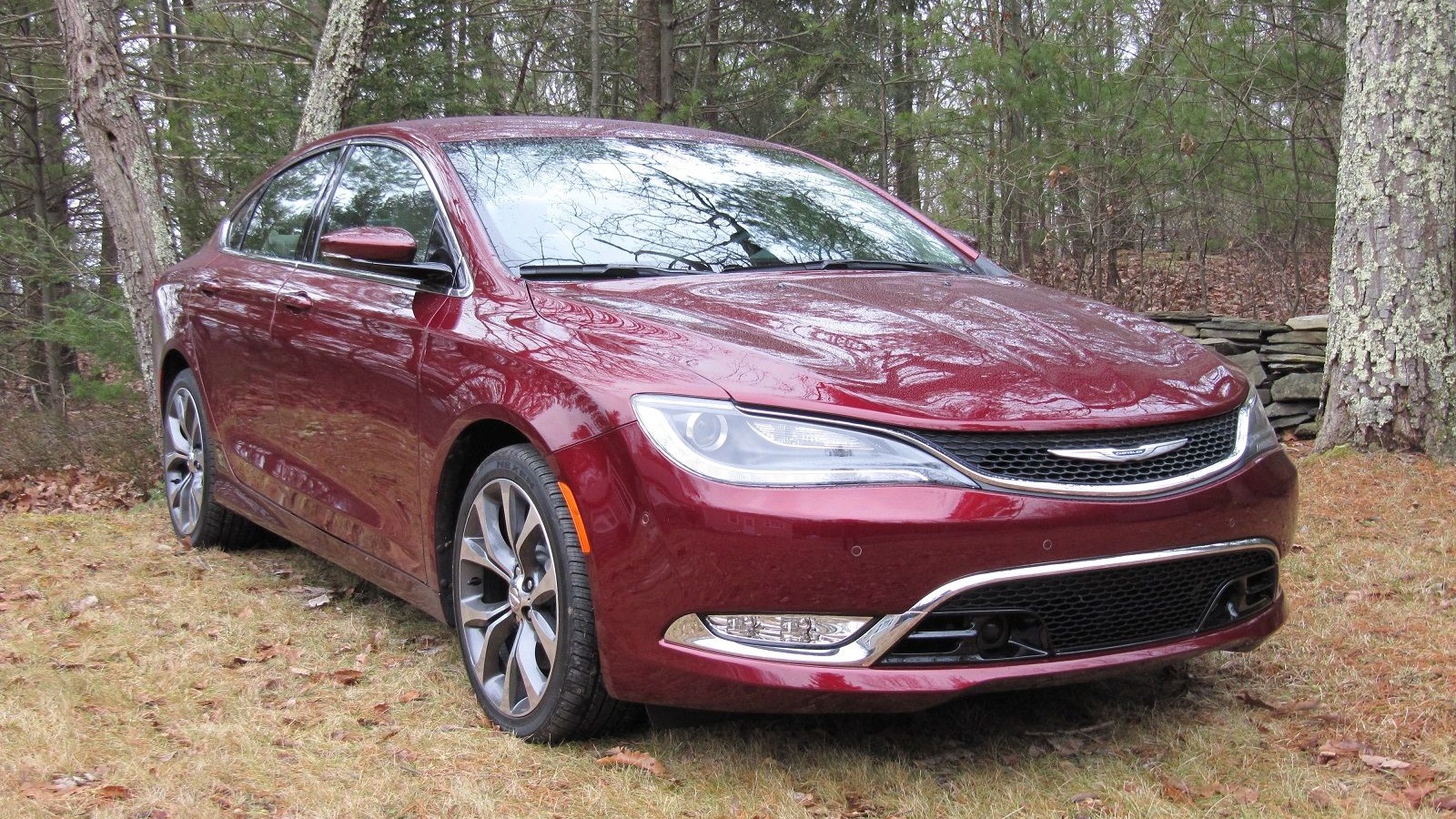
2. Chrysler 200 (2011–2017)
At first glance, the Chrysler 200 seems like an appealing used car option. It’s a midsize sedan with a sleek profile, available V6 power, and attractive pricing on the secondhand market. However, once these cars start approaching and surpassing the 100,000-mile milestone, their glaring weaknesses become increasingly hard to ignore.
The 200, particularly the first few years after its redesign, is riddled with reliability issues that make high-mileage ownership a risky proposition at best. Despite improvements in later models, the platform simply wasn’t built to withstand long-term use, and by the time many reach high mileage, they’re already on borrowed time.
One of the most significant problems plaguing the Chrysler 200 is its drivetrain. The 2.4L “Tigershark” four-cylinder engine has had a range of issues, from excessive oil consumption to inconsistent throttle response and premature wear.
Even the optional Pentastar V6, while more powerful and generally more robust, isn’t without its flaws—coolant leaks, ticking noises from valve trains, and sensor failures are all commonly reported.
The transmissions, however, are the most damning feature. The 9-speed automatic transmission, introduced as a selling point, turned out to be unreliable, with rough shifting, software glitches, and outright failures haunting owners well before the 150K mark.
Build quality in the Chrysler 200 is another area of concern. Interior materials may look modern at first, but they wear poorly over time. Door panels come loose, dashboard trim warps under heat, and seat cushions lose support. Electronics, from power windows to infotainment systems, often begin to fail as the miles climb.
Owners frequently report a general feeling of “looseness” as the car ages—the suspension feels vague, steering becomes numb, and road noise increases substantially. These issues compound the overall feeling that the 200 was simply not designed with long-term durability in mind.
While some might argue that the 200 represents good value in the used market due to its low resale prices, that affordability is quickly offset by its long list of potential problems. The cost of ownership—especially if you’re not mechanically inclined—can spiral out of control as one issue after another crops up.
Many owners have sold their cars prematurely due to repair fatigue, even when the vehicles still technically run. For those seeking a high-mileage car with dependability and low stress, the Chrysler 200 is a gamble not worth taking.
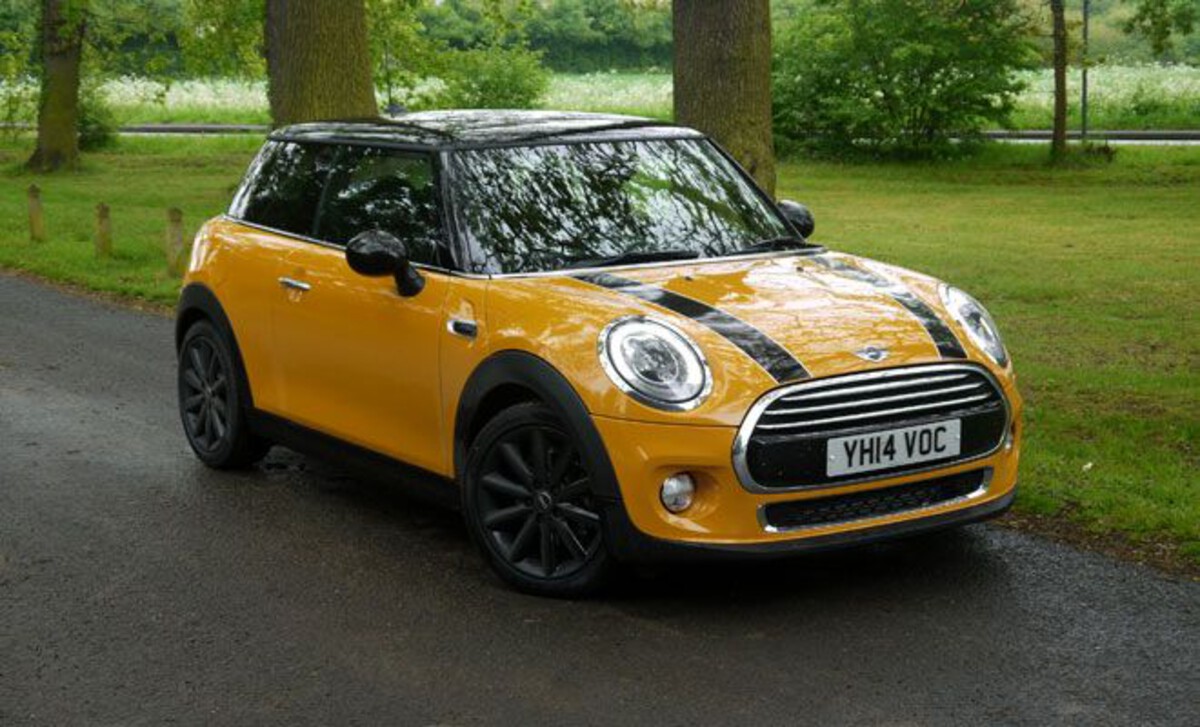
3. Mini Cooper (2007–2013)
The Mini Cooper is undeniably charming. With its retro-inspired styling, nimble handling, and youthful appeal, it attracts buyers looking for a fun and unique driving experience. But that charm quickly fades once these cars rack up higher mileage. Particularly concerning are the second-generation models (2007–2013), which suffer from a range of mechanical and electrical issues that can become overwhelming as they age.
While Minis may look like compact city cars, their inner workings are complex and often derived from BMW platforms, which means high parts prices, complicated repairs, and a steep maintenance curve.
One of the Mini’s most notorious issues is its engine. The turbocharged 1.6L engine found in many Cooper S models suffers from carbon buildup, turbo failure, timing chain tensioner problems, and oil leaks. Timing chain guides, when worn, can cause catastrophic engine failure if ignored.
Even non-turbo variants aren’t safe, as the naturally aspirated versions have their own problems with oil consumption and premature component wear. Cooling systems are another weak point—thermostats and water pumps often fail before 100K, leading to overheating and potential engine damage if not addressed immediately.
Transmission reliability is also a sore spot, especially in models equipped with the CVT (continuously variable transmission) or early automatic gearboxes. These units are known to fail without much warning, and replacement costs can run into the thousands.
Manual transmission models are slightly better in terms of durability, but clutch replacement is frequent and labor-intensive. Beyond the powertrain, Minis are prone to electrical gremlins: failing window regulators, erratic lighting systems, and intermittent dashboard warnings are all too common. These issues tend to snowball as the car ages, making it harder to justify keeping the vehicle on the road.
On top of everything else, the Mini Cooper’s cramped engine bay and tightly packed components make even basic maintenance a chore. Changing a water pump or replacing spark plugs often requires disassembling parts of the front clip.
Labor costs at Mini-certified or BMW-aligned shops are higher than average, and DIY mechanics often find themselves frustrated by the lack of space and specialized tools required.
For a car that markets itself as “fun,” the high-mileage ownership experience is often anything but. If you’re considering a used Mini with over 100K miles, be prepared for a wave of problems that can quickly eclipse the car’s initial charm.
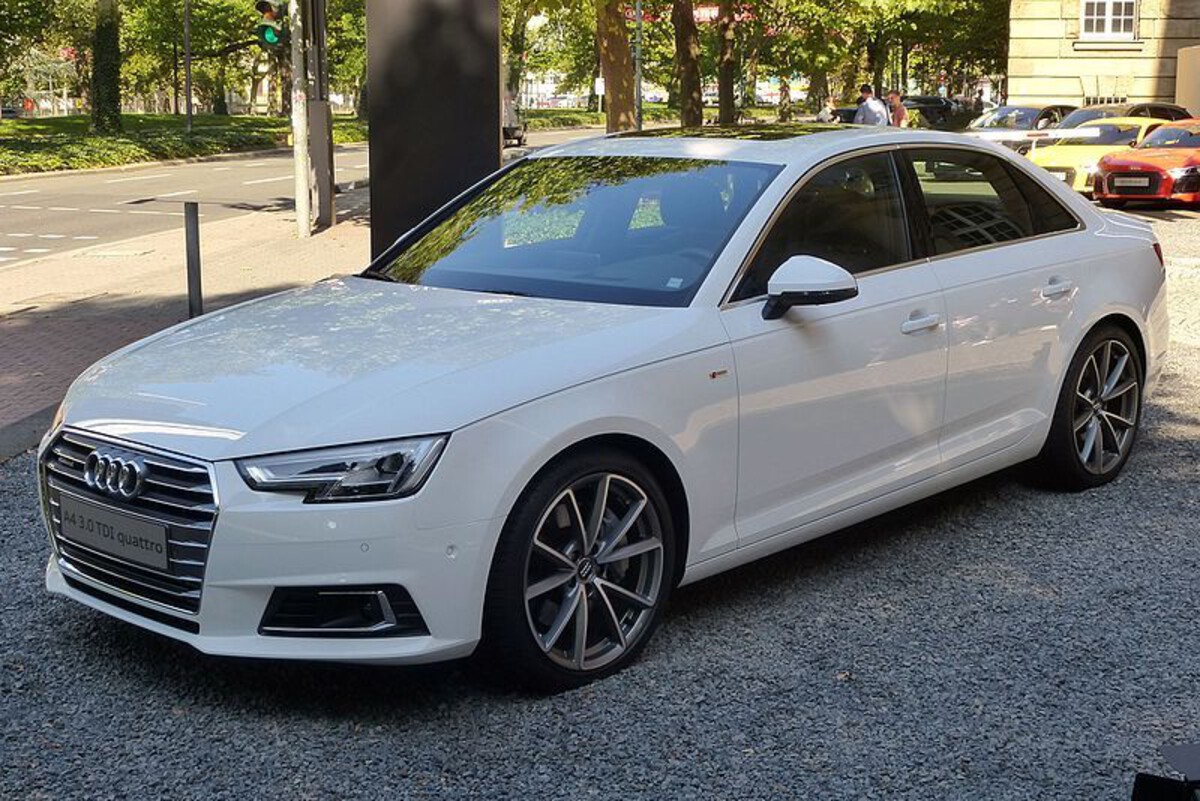
4. Audi A4 (B7 and B8 Generations, 2005–2015)
The Audi A4 is one of those vehicles that perfectly illustrates the gap between perceived luxury and real-world ownership experience. While newer A4s are celebrated for their refined cabins, smooth rides, and elegant styling, high-mileage examples often tell a different story—one filled with expensive repairs, elusive diagnostics, and chronic reliability issues.
Generations B7 and B8 (roughly 2005 to 2015) are particularly troublesome once they surpass the 100,000-mile threshold. Despite their appeal on the used market, especially given their luxury pedigree and depreciation, these models are best avoided if long-term reliability is a priority.
Engine issues dominate the list of problems for high-mileage A4s. The 2.0T engines, while efficient and responsive when new, are known for excessive oil consumption, piston ring wear, timing chain tensioner failures, and intake valve carbon buildup.
These problems can lead to misfires, rough idling, and eventually full engine rebuilds—often costing more than the car is worth. Even well-maintained vehicles aren’t immune, as many of these issues are inherent design flaws. Adding insult to injury, fixing these problems often involves significant labor time, driving repair bills through the roof.
Quattro models, while providing excellent all-weather capability, introduce additional complexity to the drivetrain. Differentials, driveshafts, and CV joints all need attention over time, and replacement parts aren’t cheap.
The automatic transmissions (particularly the CVTs in front-wheel-drive variants) are also known for early failure, requiring expensive rebuilds or replacements that often total in the thousands. Suspension components like control arms and bushings wear out quickly due to the car’s heavy curb weight and sporty tuning, contributing to a harsh ride and poor alignment retention at high mileage.
Perhaps most frustrating of all are the electrical gremlins. High-mileage A4s are plagued with sensor failures, check engine lights, malfunctioning MMI (Audi’s multimedia interface), and erratic climate control behavior. Electrical diagnostics are notoriously tricky on German cars, and Audi is no exception, meaning even simple problems can take hours to pinpoint and fix.
Ultimately, the A4’s luxury trappings become a burden rather than a benefit. Unless you’re determined to own a premium badge and are prepared for steep repair costs and downtime, a high-mileage Audi A4 is more trouble than it’s worth.
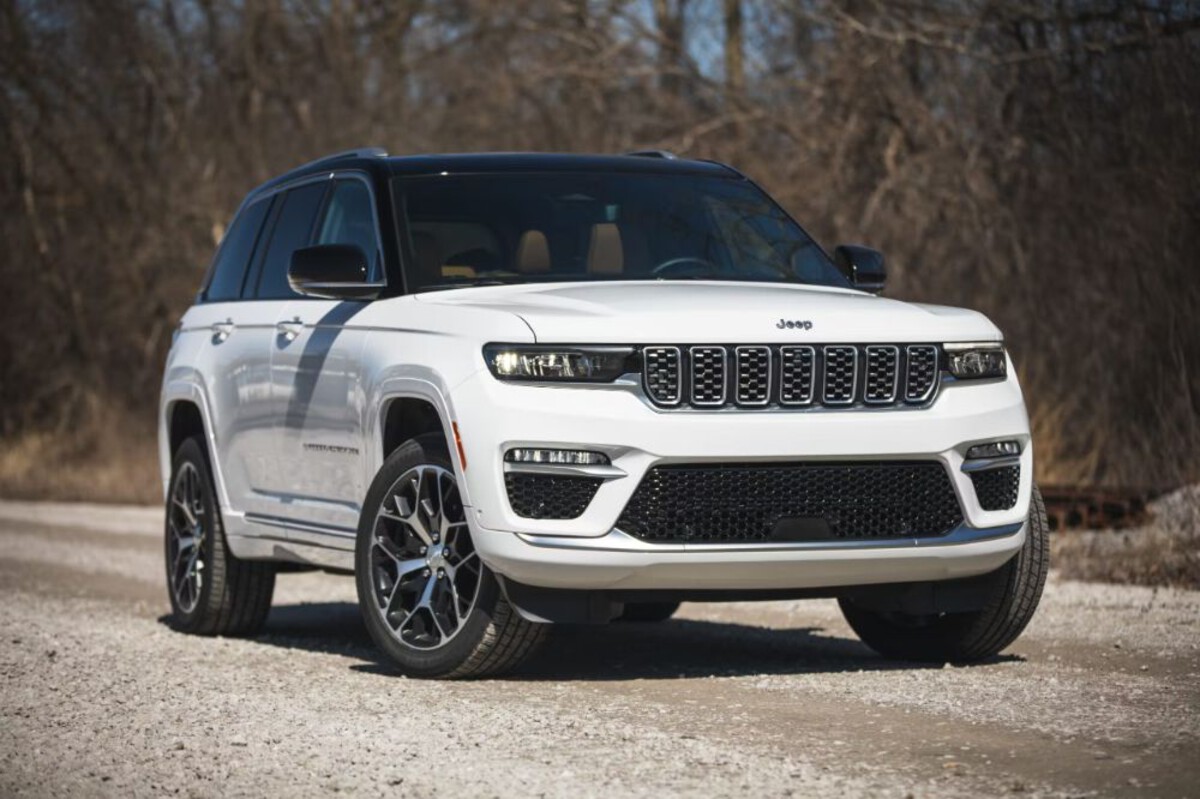
5. Jeep Grand Cherokee (2011–2014)
The Jeep Grand Cherokee, while rugged in appearance and marketed as a go-anywhere SUV, has a troubling record when it comes to high-mileage reliability—particularly for the 2011–2014 model years. These vehicles were redesigned for modern appeal, but unfortunately, carried over many of the mechanical gremlins that had long plagued Chrysler-era engineering.
As they cross the 100,000-mile threshold, issues begin to mount in key systems like the engine, transmission, and electronics. The Grand Cherokee may offer a great driving position, off-road capability, and upscale trim options, but these benefits are often offset by the sheer frequency and cost of repairs required over time.
One of the most concerning areas is the drivetrain. The 3.6L Pentastar V6 is a competent engine but known for problems with cylinder head failure and excessive oil consumption in early builds. The available 5.7L HEMI V8, while powerful, suffers from lifter and camshaft issues that can lead to ticking noises and ultimately engine failure.
These repairs are not only expensive but often come with long lead times due to parts availability. The automatic transmissions—particularly the 5-speed and early 8-speed units—have their share of problems, including rough shifting, sensor faults, and in some cases, complete failure requiring rebuild or replacement.
Suspension and steering components also degrade quickly, especially in 4×4 models used for towing or light off-roading. Ball joints, control arms, and tie rods all wear out prematurely, leading to sloppy handling and uneven tire wear.
Even the air suspension system offered on higher trims is prone to leaks and compressor failures, which can result in an extremely expensive fix. Meanwhile, the electrical systems can be maddening—instrument clusters glitch out, infotainment systems freeze, and wiring harnesses corrode, especially in regions with winter road salt exposure.
What makes the Grand Cherokee particularly frustrating as a high-mileage vehicle is the inconsistency of its reliability. Some owners report relatively few issues, while others experience a cascade of problems in quick succession. This unpredictability makes it a risky choice in the used market.
While it may check all the boxes in terms of features and aesthetics, the Grand Cherokee’s high repair frequency and above-average maintenance costs make it one of the least advisable SUVs to buy once the odometer passes six digits—unless you’re ready to spend luxury-brand money to keep it running.
ALSO READ: 5 Pickups With the Best Factory Running Boards and 5 Needing Aftermarket
High-mileage vehicles exist in a unique space within the automotive market—at once alluring and risky, affordable yet unpredictable. For the savvy buyer, they can represent outstanding value: a chance to purchase a once-expensive car at a fraction of the original price.
But without a careful, informed approach, that same purchase can turn into a stressful and expensive mistake. The key lies in understanding which vehicles are engineered to go the distance—and which ones crumble when pushed past their prime.
The five high-mileage cars that are still worth buying—Toyota Camry, Honda Accord, Toyota Corolla, Lexus ES 350, and Subaru Outback—share a common DNA. They aren’t built to impress with flash or gimmicks. They’re built to last. These vehicles consistently demonstrate durability, ease of maintenance, and a long-term ownership experience that inspires confidence.
Whether through bulletproof engines, simple but resilient drivetrains, or strong manufacturer support, these cars continue to perform well past the point where others would give up. If properly maintained, they can log another 50,000–100,000 miles without major issues, making them smart buys for budget-conscious drivers.
These vehicles also benefit from massive aftermarket support and broad parts availability. You’re not stuck waiting weeks for proprietary components or special tools to arrive. Most repairs can be done quickly, and the total cost of ownership remains low even after the warranty period.
Beyond the mechanical benefits, high-mileage stalwarts like the Camry or Accord offer peace of mind—something that becomes especially important when your car is your primary way of getting to work, school, or family events. They prove that age and mileage don’t have to be deal-breakers when quality and maintenance are on your side.
Contrast that with the five high-mileage vehicles to avoid—BMW 5 Series (E60), Chrysler 200, Mini Cooper, Audi A4, and Jeep Grand Cherokee—and you’ll see an entirely different story unfold. While these models may look attractive on paper, especially in terms of pricing and features, their real-world track records at high mileage are riddled with concerns.
From oil leaks and engine failures to complex electronics and unreliable transmissions, the cost of keeping these cars on the road often exceeds their value. For every few thousand dollars saved on the purchase price, buyers are often saddled with thousands more in repairs, many of which are recurring or require specialist intervention.
What makes these vehicles particularly deceptive is their initial appeal. Who wouldn’t want a sleek European sedan or a rugged SUV for the price of a budget compact car? But as any mechanic will tell you, the cost of a used car isn’t just what you pay upfront—it’s what you’ll spend in the months and years to come.
Luxury models, in particular, come with expensive parts, complex diagnostics, and systems that aren’t built with high-mileage longevity in mind. Even if you do your research and buy from a reputable source, you’re still entering a game of chance where the odds are not in your favor.
This doesn’t mean you should never consider a high-mileage vehicle. On the contrary, many people rely on them every day and swear by their practicality. But what matters most is buying strategically. Choose models with strong reputations, easy-to-source parts, and known maintenance histories.
Avoid vehicles that require you to roll the dice on engine or transmission reliability. And always, always insist on a thorough pre-purchase inspection—even the best cars can hide problems when neglected. High mileage doesn’t have to mean high risk, but it means you need to proceed with awareness.
Ultimately, your car should serve you, not the other way around. It should be a tool that enhances your daily life, not one that drains your bank account or leaves you stranded on the side of the road.
By focusing on proven high-mileage performers and avoiding the notorious troublemakers, you can find a car that not only meets your needs but exceeds your expectations for reliability and value.
In today’s market, where affordability and practicality matter more than ever, knowing which high-mileage cars to trust and which to avoid is no longer optional—it’s essential. Use this guide as a starting point.
Pair it with your own research, inspections, and budget planning. When done right, buying a high-mileage vehicle can be one of the smartest automotive decisions you ever make.

